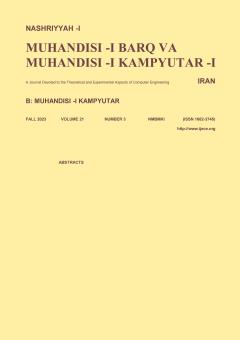-
-
List of Articles
-
Open Access Article
1 - Community Detection in Complex Dynamic Networks Based on Graph Embedding and Clustering Ensemble
Majid Mohammadpour Seyedakbar Mostafavi وحید رنجبر -
Open Access Article
2 - Social Networks Embedding Based on the Employment of Community Recognition and Latent Semantic Feature Extraction Approaches
Mohadeseh Taherparvar Fateme Ahmadi abkenari Peyman bayat -
Open Access Article
3 - Design and Collection of Speech Data as the First Step of Localization the Intelligent Diagnosis of Autism in Iranian Children
Maryam Alizadeh Shima tabibian -
Open Access Article
4 - Increase of Image Sharpness Using Visual Saliency
Mina Vafaei Jahan Abbas Ebrahimi moghadam Morteza Khademi -
Open Access Article
5 - A Two-Level Method Based on Dynamic Programming for Partitioning and Optimization of the Communication Cost in Distributed Quantum Circuits
zohreh davarzani maryam zomorodi-moghadam M. Houshmand -
Open Access Article
6 - A Fast and Lightweight Network for Road Lines Detection Using Mobile-Net Architecture and Different Loss Functions
Pejman Goudarzi milad Heydari Mehdi Hosseinpour -
Open Access Article
7 - Identification of Cancer-Causing Genes in Gene Network Using Feedforward Neural Network Architecture
مصطفی اخوان صفار abbas ali rezaee -
Open Access Article
8 - SQ-PUF: A Resistant PUF-Based Authentication Protocol against Machine-Learning Attack
Abolfazl Sajadi Bijan Alizadeh
-
The rights to this website are owned by the Raimag Press Management System.
Copyright © 2017-2025







